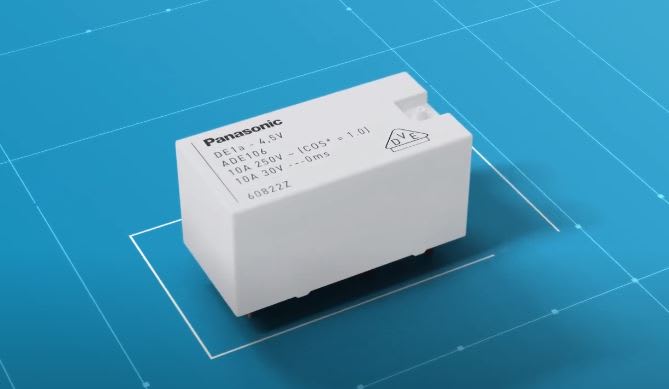Low consumption? No consumption! Energy efficiency through polarized power relays
Follow articleHow do you feel about this article? Help us to provide better content for you.
Thank you! Your feedback has been received.
There was a problem submitting your feedback, please try again later.
What do you think of this article?
Serious attempts to effectively protect the climate have a lot to do with new approaches to our daily level of energy consumption. Energy-efficient electronic components can make a significant contribution to this - even if a single component’s energy savings seem tiny in the first place. But when used in a product line that is deployed across global markets, these million- to billionfold-small savings accumulate to a significant value that will definitely make a difference from an overarching perspective.
This effect exemplarily manifests in Panasonic Industry’s polarized power relay technology, so let’s have a look at the circuit board and understand the structure of a polarized power relay:
The essential advantage of polarized power relays compared to their non-polarized counterparts is the lower power that is required in the coil, resulting from a permanent magnet being. Its magnetic field superposes with the field of the coil. This permanent magnet takes over part of the magnetic force that has to be generated on the drive side.
Now, when looking at the design of a typical circuit board in a, let’s say, conventional washing machine, the potential for saving energy and hence electricity costs becomes obvious: A whole five to eleven relays can be found on these types of circuit boards. Those are mostly non-polarized types with inevitable power losses due to their coils.
Specifically, each of these relays typically consumes at least 360 mW of power, which means a power loss of altogether up to 4 W or more for eleven relays. That may not appear much for one washing machine alone - but considering entire markets with millions and millions of households, operating those devices on a daily base, the picture is a very different one.
Moreover: the polarized power relays hardly dissipate any power, especially if they are bi-stable. This means that additional cooling becomes redundant which in turn saves valuable resources and installation space. This is a fundamental advantage in light of ever smaller and ever more powerful products and applications.
However, how do polarized power relays compare in terms of cost, when you draw a comprehensive picture from unit costs to potential savings?
Assuming the 2021 average private household electricity price level as a basis - and a usage period of twelve hours per day: Compared to a non-polarized relay, a bistable polarized relay achieves a cashback, i.e. compensates the slightly higher unit costs already after less than two years! (Employing a monostable polarized relay will pay off in less than five years under these preconditions).
Given all this, it makes perfect sense for OEMs to use and promote these energy-efficient components, even though the non-polarized relays may seem more cost-effective at first glance.
Even when assuming industrial electricity prices, the use of Panasonic Industry's polarized power relays is profitable: at an industrial energy cost of 10 cents per kWh, the use of Panasonic polarized power relays still breaks even after 7.2 years –still plenty of years to go given the current expectation of an average useful life for today's machinery and equipment of 15 to 25 years.
The cumulative savings potential from polarized power relays is enormous. The technology is ready - now it's a matter of using it wherever it makes sense.
Panasonic’s portfolio of polarized power relays
Currently, Panasonic Industry Europe offers polarized relays for a wide set of applications in the fields of home & building, industrial or smart city automation.
Next to being particularly more shock and vibration resistant than their non-polarized counterparts, the main advantage of the polarized relays is to be seen in their efficiency. In essence: the permanent magnet in the body of the relay reduces the energy required to actuate the contact spring, and in bi-stable latching relays consumes no energy in the switched state. This results in highly efficient operation with no self-heating caused by power loss in the coil.
DE series: Smallest 16A polarized power relay in the market
Your choice for miniaturized and energy-efficient applications – particularly in smart outlets up to 3.6 kW that require a minimum 8mm creepage and clearance gap. The latching variants (one or two coils) enhance your application’s power efficiency, while the monostable version keeps losses low for applications that do not allow latching relays.
Learn more about the polarized power relays' constructive principle and their energy-saving potential in this short video:






Comments